Hatchet Pond
Hatchet Pond is primarily a shallow lake, although with some patches of deep water, surrounded by heathland. It is the largest body of water within the Crown Lands of the New Forest and is a popular destination with visitors and locals alike.
Fed by narrow streams that drain the surrounding heathland, Hatchet Pond is within the bounds of East Boldre parish but is also only one and a quarter miles (2 kilometres) from Beaulieu village centre.
It is an ideal place to enjoy a picnic and also to simply take a little water-side relaxation.
The pond is on the route of the New Forest Tour bus (summer only), public toilets are located in the car park, and an ice cream van is often present - a real attraction for children and others, particularly in the warmer months.
Swimming and boating are, however, not permitted.
(1) Hatchet Pond - a great place to visit
Ducks, swans and geese have become accustomed to being fed by visitors, whilst commoners' stock - cattle, ponies and donkeys - graze the pond-side margins and wade into the water in search of refreshment. The bolder animals may even beg for food from picnickers and others.
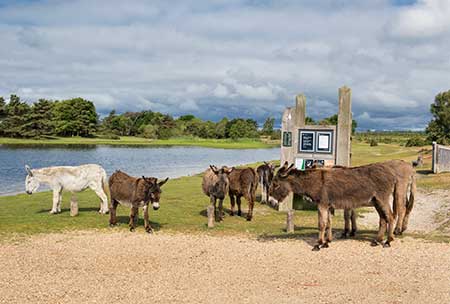
Feeding them is a big mistake, however, as appetites are rarely sated and what can appear at first glance to be cute, lovable creatures can quickly become aggressive when the tit-bits run out.
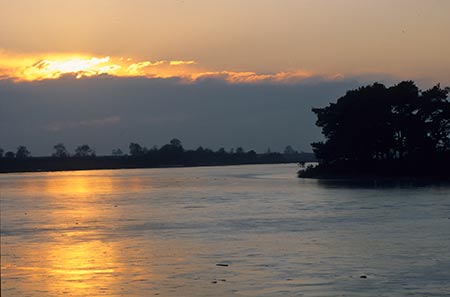
Hatchet Pond provides an ideal start point for walks in the area, including a five mile (8 kilometre) circular walk that takes in Rans Wood, Hawkhill Inclosure, Beaulieu Heath and Bagshot Moor, and a walk around the site of East Boldre Airfield.
It is also possible to walk right the way around the pond, but this is not recommended from March - July when scarce, vulnerable ground nesting birds may be present, particularly in the very wet, boggy ground at the south-western end.
Hatchet Pond and nearby Hatchet Mill also have fascinating inter-linked histories. Find out more here - Hatchet Pond and Hatchet Mill - their origins.
(2) Hatchet Pond wildlife
Hatchet Pond is surrounded on virtually all sides by heathland so almost inevitably, heathland wildlife, such as Dartford warblers, silver-studded blue butterflies and the occasional reptile, are present in the vicinity.
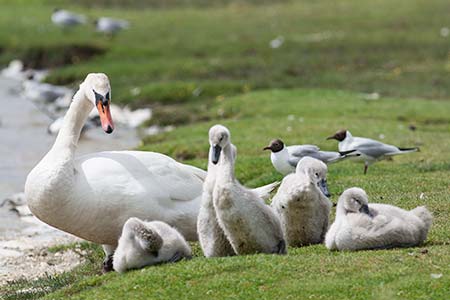
But wildlife more directly associated with the pond is also rich and varied. However, much of the water is relatively unsheltered so the surface can become quite choppy in even fairly gentle breezes. Consequently, aquatic vegetation seems to be relatively sparse apart, that is, from in the more sheltered northern section where, for example, a nice display of bogbeans can be enjoyed in May and early June.
Seemingly, though, and maybe surprisingly, over a third of all species of wetland plants found in the UK are present in and around the pond, including the nationally rare Hampshire purslane and the attractive and far more widespread bog asphodel and bog myrtle. (According to the Forestry Commission, a total of 133 wetland plant species have been recorded, and the pond and its immediate environs are home to 87% of the UK's rarest wetland plants).
Canada geese, black-headed gulls, grey herons, mallards, occasional little egrets and oystercatchers, mute swans, moorhens, coots, and spring and summer visiting common terns add to the wildlife interest.
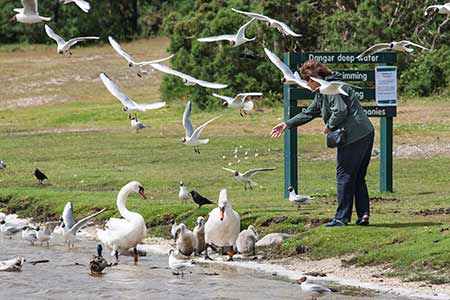
Good numbers of dragonflies and damselflies are also present during the warmer months, although for the dragonfly and damselfly enthusiast, two smaller ponds beside the nearby Hatchet Moor car park are a better bet: at least fifteen species have been recorded there.
And maybe the most dedicated wildlife enthusiasts will be interested to learn that the incredibly rare, legally protected, blood sucking Medicinal Leech (Hirudo medicinalis) occurs in Hatchet Pond's shallow, well-vegetated northern section (which is sometimes known as Hatchet Marl Pits Pond).
(3) Fishing in Hatchet Pond
Hatchet Pond and Little Hatchet Pond are well-stocked with fish - according to the Forestry Commission, roach, bream, tench, pike, perch, eels, carp and rudd are all present.
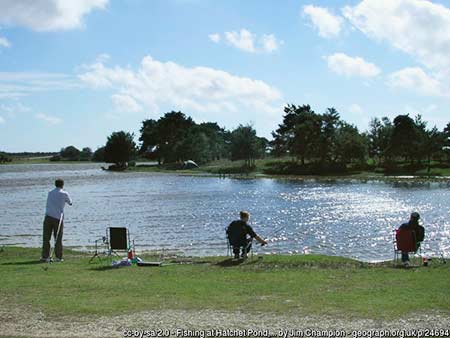
Indeed, in the context of Hatchet Pond, this has been the case since the 19th century, for Hampshire directories between at least 1859 and 1878 noted that: 'Hatchett (sic) Pond, which covers about 30 acres, abounds with fish .....'.
In 2019, though, much to the angst of local fishermen, many of the carp, including some really big fish, were removed from Hatchet Pond following advice from Natural England - as bottom feeders and also as a result of their diet, the carp were apparently detrimentally affecting water quality.
To fish at Hatchet Pond and Little Hatchet Pond, a Forestry England fishing permit and an Environment Agency Rod License are required.
References:
Discovering the New Forest: Terry Heathcote
Medicinal Leeches in the New Forest: Robert Aquilina
Biodiversity in the New Forest: Edited by Adrian C. Newton
Flora of Hampshire: Anne Brewis, Paul Bowman and Francis Rose
Hatchet Pond - Forestry England
Fishing in Hatchet Pond
Furious Fishermen
Hatchet Pond dragonflies
Quick links
More links
Search this site

